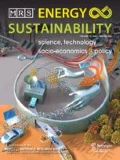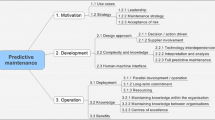Abstract
A case study of hard disk drives (HDDs) and rare-earth magnets is presented to show the use of decision support tools to identify and assess the barriers and opportunities for circular business models. Pilot demonstration projects, which showcased HDD circular recovery strategies, were useful as a low-risk opportunity for business model experimentation and to build trust among key supply chain actors.
A case study of hard disk drives and rare-earth magnets is presented to show the use of decision support tools (DSTs) to assess the complex interaction of variables that must be considered when demonstrating the viability of circular business models (CBMs). A mix of quantitative and qualitative DSTs such as life cycle assessment, techno-economic assessment, Ostrom's Framework for social-ecological systems, decision trees, and others were implemented by the iNEMI Value Recovery Project team to overcome many of the identified barriers to circular economy. The DSTs were used to guide stakeholder coordination, create and share environmental, logistical and financial data, and generate decision-making flowcharts which promote circular economic strategies. Demonstration projects were used as a low-risk opportunity for business model experimentation and to build trust among key supply chain actors. The tools highlighted by this case study could be useful for establishing or expanding CBMs for other electronic products or components, especially components containing critical materials.








Similar content being viewed by others
References
PwC: Make it your business: Engaging with the Sustainable Development Goals, 2015. Available at: https://www.pwc.com/gx/en/sustainability/SDG/SDG%20Research_FINAL.pdf.
Material Economics: The Circular Economy: A Powerful Force for Climate Mitigation (Stockholm, Sweden, 2018). Available at: https://media.sitra.fi/2018/06/12132041/the-circular-economy-a-powerful-force-for-climate-mitigation.pdf.
Ellen MacArthur Foundation: Towards the Circular Economy: Economic and Business Rationale for an Accelerated Transition, Vol. 1 (2013). Available at: https://www.ellenmacarthurfoundation.org/assets/downloads/publications/Ellen-MacArthur-Foundation-Towards-the-Circular-Economy-vol.1.pdf.
Ludeke-Freund F., Gold S., and Bocken N.M.P.: A review and typology of circular economic business model patterns. J. Ind. Ecol. 23, 36–61 (2018). doi:10.1111/jiec.12763.
International Electronics Manufacturing Initiative: Value recovery from used electronics, Phase 2. Available at: https://community.inemi.org/value_recovery_2 (accessed January 5, 2020).
Handwerker C.A., Olson W., and Rifer W.: Value Recovery from Used Electronics. iNEMI Final Project Report–Phase 1, February 2017. Available at: https://community.inemi.org/value_recovery.
Guldmann E., Bocken N.M., and Brezet H.: A design thinking framework for circular business model innovation. J. Bus. Models 7, 39–70 (2019). doi:10.5278/ojs.jbm.v7i1.2122.
Handwerker C.A. and Olson W.: Value Recovery from Used Electronics Project. iNEMI Final Project Report Phase 2, August 2019. Available at: https://www.inemi.org/value-recovery-2-final-report
University of Cambridge Institute for Manufacturing: Decision support tools: Overview. Available at: https://www.ifm.eng.cam.ac.uk/research/dstools/ (accessed October 20, 2019).
Huysegoms L. and Cappuyns V.: Critical review of decision support tools for sustainability assessment of site remediation options. J. Environ. Manage. 196, 278–296 (2017). doi:10.1016/j.jenvman.2017.03.002.
Bocken N., Strupeit L., Whalen K., and Nußholz J.: A review and evaluation of circular business model innovation tools. Sustainability 11, 2210 (2019). doi:10.3390/su11082210.
Bocken N.M., Miller K., Weissbrod I.K., Holgado M., and Evans S.: Business model experimentation for circularity: Driving sustainability in a large international clothing retailer. Econ. Policy Energy Environ. (EPEE). Special Issue on Circular Economy (2017). doi:10.3280/EFE2017-001006.
Ritzén S. and Sandström G.Ö.: Barriers to the circular economy–integration of perspectives and domains. Procedia CIRP 64, 7–12 (2017).
Kirchherr J.W., Hekkert M.P., Bour R., Huijbrechtse-Truijens A., Kostense-Smit E., and Muller J.: Breaking the barriers to the circular economy (2017). Available at: https://www.uu.nl/en/files/breaking-the-barriers-to-the-circular-economy-white-paperwebpdf.
Rizos V., Behrens A., Kafyeke T., Hirschnitz-Garbers M., and Ioannou A.: The circular economy: Barriers and opportunities for SMEs. CEPS Working Documents, September 2015. Available at: https://papers.ssrn.com/sol3/papers.cfm?abstract_id=2664489.
Galvão G.D.A., de Nadae J., Clemente D.H., Chinen G., and de Carvalho M.M.: Circular economy: Overview of barriers. Procedia CIRP 73, 79–85 (2018). doi:10.1016/j.procir.2018.04.011.
Tura N., Hanski J., Ahola T., Ståhle M., Piiparinen S., and Valkokari P.: Unlocking circular business: A framework of barriers and drivers. J. Clean. Prod. 212, 90–98 (2019).
Shehabi A., Smith S., Sartor D., Brown R., Herrlin M., Koomey J., Masanet E., Horner N., Azevedo I., and Lintner W.: United states data center energy usage report, June 1, 2016. Lawrence Berkeley National Lab (LBNL), Berkeley, CA, USA. Available at: https://www.osti.gov/servlets/purl/1372902.
Nguyen R.T., Diaz L.A., Imholte D.D., and Lister T.E.: Economic assessment for recycling critical metals from hard disk drives using a comprehensive recovery process. JOM (2017). doi:10.1007/s11837-017-2399-2.
Reinsel D., Gantz J., and Rydning J.: Data Age 2025: The Digitization of the World From Edge to Core. IDC White Paper, November 2018. Available at: https://www.seagate.com/files/www-content/our-story/trends/files/idc-seagate-dataage-whitepaper.pdf.
Bauer R.: HDD vs SSD: What Does the Future for Storage Hold? — Part 2. Backblaze, March 13, 2018. Available at: https://www.backblaze.com/blog/hdd-vs-ssd-in-data-centers/.
Binnemans K., Jones P.T., Blanpain B., Van Gerven T., Yang Y., Walton A., and Buchert M.: Recycling of rare earths: A critical review. J. Clean. Prod. 51, 1–22 (2013). doi:10.1016/j.jclepro.2012.12.037
US Geological Survey: Mineral Commodity Summaries: Rare Earths, February 2019. Available at: https://prd-wret.s3-us-west-2.amazonaws.com/assets/palladium/production/atoms/files/mcs-2019-raree.pdf.
Sabbaghi M., Cade W., Olson W., and Behdad S.: The global flow of hard disk drives: Quantifying the concept of value leakage in e-waste recovery systems. J. Ind. Ecol. 23, 560–573 (2018). doi:10.1111/jiec.12765.
Ellen MacArthur Foundation: Circular Economy System Diagram. Available at: https://www.ellenmacarthurfoundation.org/circular-economy/concept/infographic (accessed October 22, 2018).
Zakotnik M., Afiuny P., Dunn S., and Tudor C.O.: U.S. Patent No. 9,067,284. Washington, DC: U.S. Patent and Trademark Office (2015).
Zakotnik M. and Tudor C.O.: Commercial-scale recycling of NdFeB-type magnets with grain boundary modification yields products with “designer properties” that exceed those of starting materials. Waste Manage. 44, 48–54 (2015). doi:10.1016/j.wasman.2015.07.041.
Prodius D., Gandha K., Mudring A.V., and Nlebedim I.C.: Sustainable urban mining of critical elements from magnet and electronic wastes. ACS Sustain. Chem. Eng. 8, 1455–1463 (2020). doi:10.1021/acssuschemeng.9b05741.
Handwerker C. and Olson W.: Creating a Circular Economy for Hard Disk Drives–A Shared Vision (October 31, 2018). End-of-Project Webinar. Available at: https://community.inemi.org/value_recovery_2.
Ostrom E.: A general framework for analyzing sustainability of social-ecological systems. Science 325, 419 (2009).
McGinnis M.D. and Ostrom E.: Social-ecological system framework: Initial changes and continuing challenges. Ecol. Soc. 19, 30 (2014). doi:10.5751/ES-06387-190230.
Ostrom E.: Background on the institutional analysis and development framework. Policy Stud. J. 39, 7–24 (2011). Available at: https://pdfs.semanticscholar.org/cbcf/cf29ff30d31bc477bbf3f219a6c2037f7eb8.pdf.
Handwerker C., Olson W., Spencer G., Schaffer M., and Frost K.: Application of the Ostrom framework to support a circular economy for used electronics. In Proceedings of CARE Innovation, Vienna, Austria, 2018.
Asif F.M., Rashid A., Bianchi C., and Nicolescu C.M.: System dynamics models for decision making in product multiple lifecycles. Resour. Conserv. Recycl. 101, 20–33 (2015).
Asif F.M., Lieder M., and Rashid A.: Multi-method simulation based tool to evaluate economic and environmental performance of circular product systems. J. Clean. Prod. 139, 1261–1281 (2016).
ISO 14040: Environmental Management—Life Cycle Assessment—Principles and Framework (Geneva, Switzerland, 2006).
Jin H., Frost K., Sousa I., Ghaderi H., Bevan A., Zakotnik M., and Handwerker C.: Life cycle assessment of emerging technologies on value recovery from hard disk drives. Resour. Conserv. Recycl. 157, 104781 (2020). doi:10.1016/j.resconrec.2020.104781.
Rigamonti L., Falbo A., Zampori L., and Sala S.: Supporting a transition towards sustainable circular economy: Sensitivity analysis for the interpretation of LCA for the recovery of electric and electronic waste. Int. J. Life Cycle Assess. 22, 1278–1287 (2017). doi:10.1007/s11367-016-1231-5.
Angouria-Tsorochidou E., Cimpan C., and Parajuly K.: Optimized collection of EoL electronic products for circular economy: A techno-economic assessment. Procedia CIRP 69, 986–991 (2018).
Diaz L.A. and Lister T.: Economic evaluation of an electrochemical process for the recovery of metals from electronic waste. Waste Manage. 74 (2017). doi:10.1016/j.wasman.2017.11.050.
Lacovidou E., Busch J., Hahladakis J., Baxter H., Ng K., and Herbert B.: A parameter selection framework for sustainability assessment. Sustainability 9, 1497 (2017).
Ziout A., Azab A., and Atwan M.: A holistic approach for decision on selection of end-of-life products recovery options. J. Clean. Prod. 65, 497–516 (2014). doi:10.1016/j.jclepro.2013.10.001.
NSF International: NSF/ANSI 426-2019 Environmental Leadership and Corporate Social Responsibility Assessment of Servers. NSF International, December 2019. Available at: https://greenelectronicscouncil.org/wp-content/uploads/2020/01/NSF-426-2019.pdf.
International Electronics Manufacturing Initiative: Non-physical data destruction for enterprise storage. Available at: https://community.inemi.org/non_physical_data_destruct (accessed May 1, 2020).
Toyota: Toyota develops new magnet for electric motors aiming to reduce use of critical rare-earth element by up to 50%, February 20, 2018. Available at: https://global.toyota/en/newsroom/corporate/21139684.html (accessed May 6, 2020).
Department of Energy.: Electric Motors Research and Development DOE alternatives. Available at: https://www.energy.gov/eere/vehicles/electric-motors-research-and-development (accessed May 5, 2020).
Yano J., Muroi T., and Sakai S.I.: Rare earth element recovery potentials from end-of-life hybrid electric vehicle components in 2010–2030. J. Mater. Cycles Waste Manage. 18, 655–664 (2016).
Ballinger B., Schmeda-Lopez D., Kefford B., Parkinson B., Stringer M., Greig C., and Smart S.: The vulnerability of electric-vehicle and wind-turbine supply chains to the supply of rare-earth elements in a 2-degree scenario. Sustain. Prod. Consump. 22, 68–76 (2020).
Pavel C.C., Thiel C., Degreif S., Blagoeva D., Buchert M., Schüler D., and Tzimas E.: Role of substitution in mitigating the supply pressure of rare earths in electric road transport applications. Sustain. Mater. Technol. 12, 62–72 (2017). doi:10.1016/j.susmat.2017.01.003.
Ellen MacArthur Foundation and Ansys/Granta: Material Circulatory Indicators: An Approach to Measuring Circularity, 2019. Available at: https://www.ellenmacarthurfoundation.org/assets/downloads/Circularity-Indicators-Methodology.pdf (accessed December 1, 2019).
Acknowledgments
The authors acknowledge the International Electronics Manufacturing Initiative (iNEMI) for organizing this project. We thank all of the iNEMI Value Recovery of Used Electronics, Phase 2 project team for their incredible contributions.
Some of this work was supported by the Critical Materials Institute, an Energy Innovation Hub funded by the U.S. Department of Energy, Office of Energy Efficiency and Renewable Energy, Advanced Manufacturing Office for developing the punching process for intact magnet recovery, REE recycling technologies, techno-economic analysis, life cycle assessment, and system dynamics models.
Author information
Authors and Affiliations
Corresponding author
Rights and permissions
About this article
Cite this article
Frost, K., Jin, H., Olson, W. et al. The use of decision support tools to accelerate the development of circular economic business models for hard disk drives and rare-earth magnets. MRS Energy & Sustainability 7, 22 (2020). https://doi.org/10.1557/mre.2020.21
Received:
Accepted:
Published:
DOI: https://doi.org/10.1557/mre.2020.21




